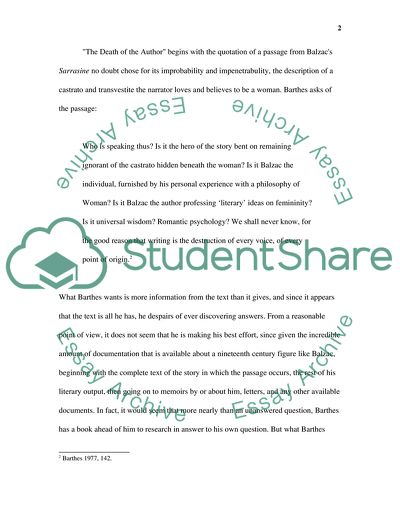Cite this document
(Barthes and Art History Assignment Example | Topics and Well Written Essays - 3000 words, n.d.)
Barthes and Art History Assignment Example | Topics and Well Written Essays - 3000 words. Retrieved from https://studentshare.org/culture/1721460-in-what-sense-does-barthes-death-of-the-author-herald-a-shift-in-the-practice-of-art-history
Barthes and Art History Assignment Example | Topics and Well Written Essays - 3000 words. Retrieved from https://studentshare.org/culture/1721460-in-what-sense-does-barthes-death-of-the-author-herald-a-shift-in-the-practice-of-art-history
(Barthes and Art History Assignment Example | Topics and Well Written Essays - 3000 Words)
Barthes and Art History Assignment Example | Topics and Well Written Essays - 3000 Words. https://studentshare.org/culture/1721460-in-what-sense-does-barthes-death-of-the-author-herald-a-shift-in-the-practice-of-art-history.
Barthes and Art History Assignment Example | Topics and Well Written Essays - 3000 Words. https://studentshare.org/culture/1721460-in-what-sense-does-barthes-death-of-the-author-herald-a-shift-in-the-practice-of-art-history.
“Barthes and Art History Assignment Example | Topics and Well Written Essays - 3000 Words”, n.d. https://studentshare.org/culture/1721460-in-what-sense-does-barthes-death-of-the-author-herald-a-shift-in-the-practice-of-art-history.


